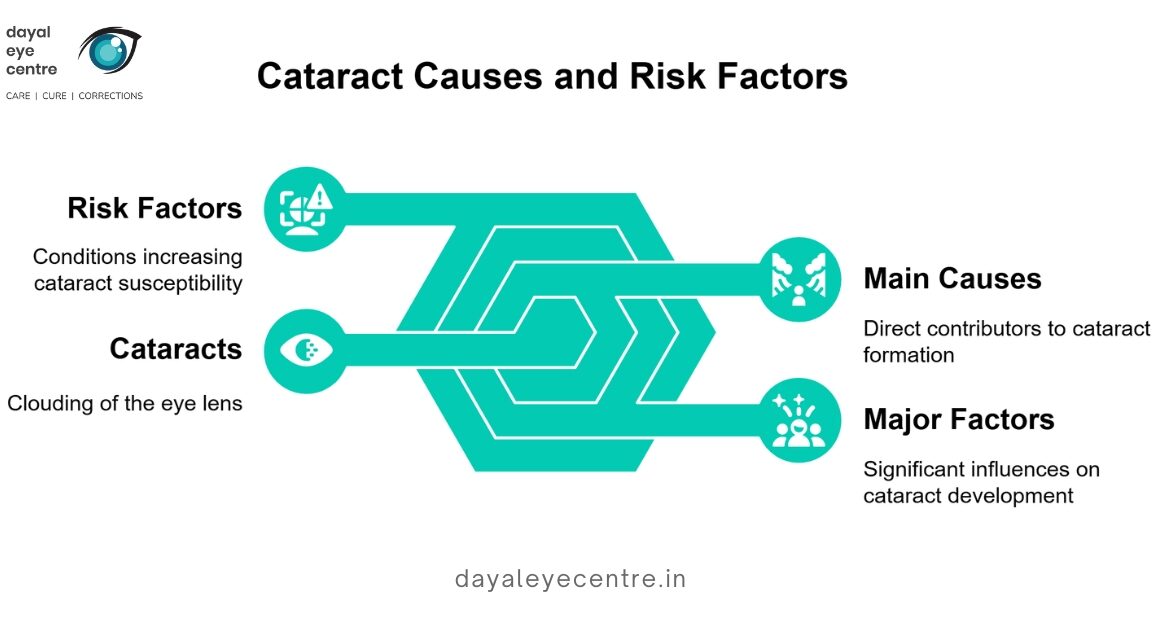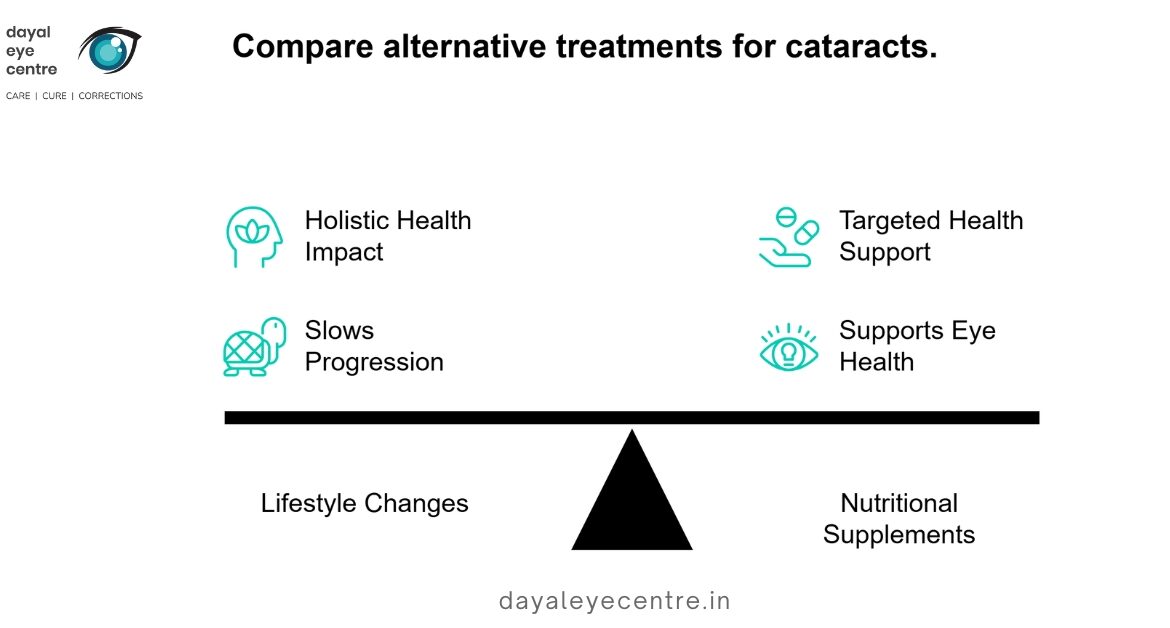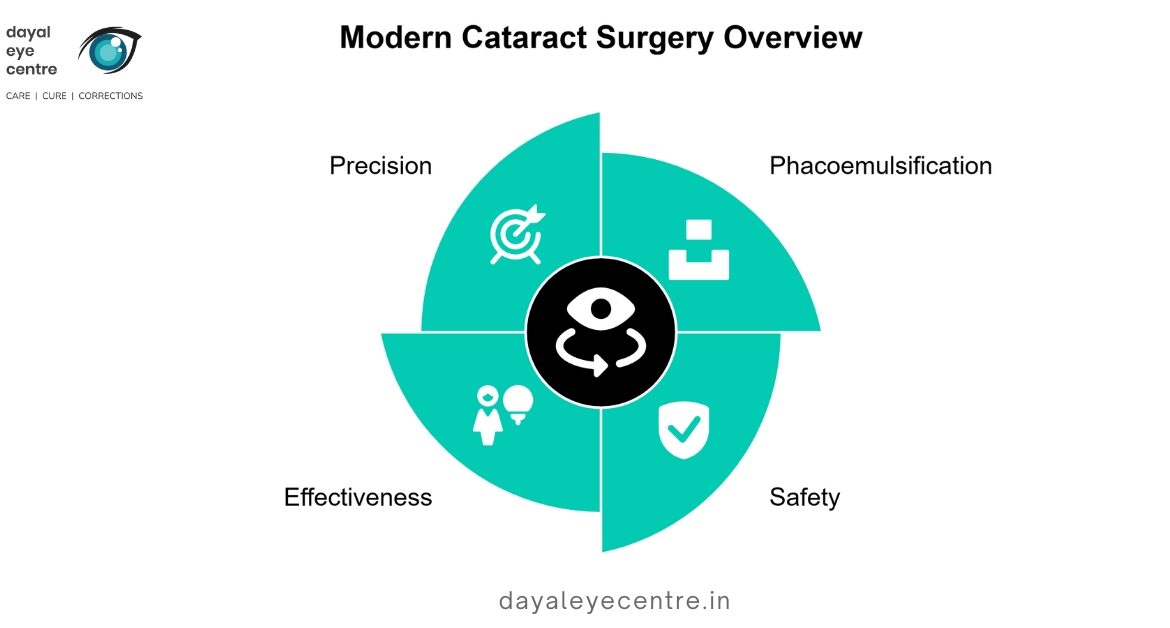Unfortunately, cataracts can’t be cured with eye drops. Current treatments focus on surgery to remove the cloudy lens and replace it with a clear artificial lens.
Though some eye drops on the market promise to relieve symptoms or delay progression, they cannot remove cataracts. Having a clear understanding of this distinction is key to providing quality eye care.
By remaining educated on what cataract surgery can and cannot do, you will be better equipped to make informed decisions about your ocular health.
Understanding Cataracts
Cataracts are the leading cause of reversible vision impairment and blindness worldwide, and are a clouding of the natural lens in the eye. This prevalent condition impacts millions around the world, particularly people over the age of 55. The slow progression of cataracts can have a significant effect on quality of life, since vision will get worse day by day. Learn

What are cataracts
Cataracts are a common eye condition and, without surgery, can lead to significant vision loss. They vary in severity, with some cataracts causing mild blurriness in lens clarity and others producing complete opacity.
Typically, cataracts develop gradually, affecting one or both eyes as a natural part of the aging process.
Causes of cataracts
Aging, diabetes, and ultraviolet light exposure are the main causes of cataracts. Eye injuries and genetic mutations are major factors in their formation. Significant risk factors include a family history of cataracts, diabetes mellitus, older adulthood, and lifestyle habits like smoking and heavy alcohol use.
Symptoms of cataracts
The three most common symptoms of cataracts are blurry or cloudy vision, increased glare sensitivity and trouble seeing at night.
Uncertainty and budget considerations often make the issue of frequent changes in eyewear prescriptions an emotional and practical burden for patients.
Cataracts can make colors look faded, making even simple activities like reading a menu frustratingly challenging.
Eye Drops for Cataracts
Due to this recent positive breakthrough in eye care, there has been a renewed enthusiasm toward developing cataract eye drops. In any case, surgery remains the only real solution for age-related cataracts. Today, with significant and sustained research on pharmacological therapies, new doors are being opened.
If you’re considering using eye drops, it’s important to speak with an eye care provider.
Effectiveness of Eye Drops
Other studies have found that these eye drops can slow cataract progression or make cataracts clearer. For example, antioxidant eye drops have demonstrated promise in maintaining lens transparency.
Though they have revolutionized treatment, none come close to being a cure, particularly as surgical interventions. Currently, there are no FDA-approved pharmacologic therapies available for age-related cataracts,
Mechanism of Action
Compounds such as lanosterol may hold the key to targeting the underlying cause of cataracts: protein aggregation. Studies have shown that lanosterol can reverse cataract formation, most notably shown in lab experiments with children afflicted with congenital cataracts.
Current Research Findings
In past years, we’ve seen a number of studies, like those on ‘Can-C,’ yielding promising results. Animal models showed that 85% of rabbits showed major improvements in cataract severity.
This showcases promise for future treatments to come.
Limitations of Eye Drops
Although these results are hopeful, eye drops have not yet been FDA-approved for use in cataracts, and their impacts aren’t permanent. These treatments might not be right for all cataract patients.
Alternative Treatments for Cataracts
Learning more about alternative treatments for cataracts can help you take control of your health and find the best solutions for your needs. While no eye drops have received FDA approval for age-related cataracts, certain lifestyle changes, nutritional supplements, and vision therapy can help support overall eye health and potentially slow progression.

Lifestyle Changes
Avoiding tobacco and limiting alcohol intake are important steps we can all take to protect our eyes and overall health. Studies have shown that smoking can increase the risk of cataracts by as much as 2 times.
Preventive measures such as protecting your eyes from UV radiation by wearing sunglasses can lower your chances of developing cataracts by up to 20 percent. Routine eye examinations are best to keep track of cataract progression and to provide treatments when appropriate.
Nutritional Supplements
Vitamins and antioxidants, especially vitamins C and E, can help keep the lens healthy. In a study of more than 30,000 women, researchers found that antioxidants might lower the risk of developing cataracts by as much as 64 percent.
A diet rich in fruits and vegetables increases the nutrients you need for healthy vision. Prioritize ones that are high in lutein and zeaxanthin for the greatest impact! Garlic extract has been shown to have catarogenic prevention activity and delay cataract progression.
Vision Therapy
Vision therapy should be considered to improve visual function in cataract patients with special exercises to improve contrast sensitivity and focus. By working with an eye care professional, you get a more tailored approach that will make your therapy work better for you.
Surgical Options for Cataract Management
Surgery remains the gold standard for cataract treatment. Thanks to advances in modern techniques, cataract surgery has undergone a dramatic transformation, providing patients safer, more effective and more precise ways to restore their vision.
One of the most important innovations has been phacoemulsification, a technique in which ultrasound waves shatter the cloudy lens so it can be suctioned out.

Types of Cataract Surgery
Modern cataract surgery is much more advanced and offers new, minimally invasive techniques, including larger incisions.
Laser-assisted techniques, which offer increased precision, have also become popular. Since laser surgery involves less trauma to the eye, patients can expect decreased recovery time.
Intraocular lenses (IOLs), which are placed in the eyes after cataracts are removed, are critical to restoring vision. They allow patients to look forward to sharper vision following surgery.
Recovery Process
Post-op recovery time will vary, but plan on at least one to two weeks. Patients are given detailed instructions for postoperative care, including how to use the prescribed eye drops to help with healing.
Follow-up appointments are critical to monitor post-surgery recovery and measure improvement in vision.
Risks and Benefits
While cataract surgery is safe, it is not without risks including infection or even the risk of worse vision than before surgery.
The benefits—better vision and a better quality of life—usually far outweigh these risks. Talking through these factors with an eye care provider is crucial to making the best, most informed decision.
Conclusion
Cataracts are one of the most prevalent vision problems, but the good news is that they are treatable. Eye drops are a promising alternative, but they can’t replace surgery as the main form of treatment. There are good alternative methods. There are several alternative methods, but their evidence is lacking. Surgical options are still the most effective and widely used methods to restore clear vision.
Learn more about these pathways so you can take smart steps to protect your vision. Routine follow-ups with your eye doctor are important for keeping an eye on cataracts. Initial evaluation visits are needed to get an understanding of how to best treat you. Take care of your vision and speak up at the first sign of concern.
Look at all your choices and feel free to inquire and get clarification. Educate yourself, and take control of your eye health with cataract knowledge today!
Frequently Asked Questions
Can cataracts be cured with eye drops?
Today, there are no FDA-approved eye drops to treat cataracts. While research continues, surgical intervention remains the only effective treatment option available today.
What are the symptoms of cataracts?
The most prevalent symptoms are having blurry vision, having trouble with night vision, light sensitivity, and seeing halos around light sources. That’s why routine eye exams are so important for early detection.
At what age do cataracts typically develop?
Cataracts primarily affect older adults, most often after the age of 60. They can happen sooner because of genetics or other health conditions.
What are the risk factors for developing cataracts?
Currently, there are no viable non-surgical treatments. Lifestyle changes, such as better nutrition and UV protection, can play a role in slowing progression.
How is cataract surgery performed?
To treat cataracts, the cloudy lens must be removed and is usually replaced with a clear artificial lens. It’s a simple, safe, low-cost outpatient procedure with an over 95% success rate.
Are there any non-surgical treatments for cataracts?
Currently, there are no viable non-surgical treatments. Lifestyle changes, such as better nutrition and UV protection, can play a role in slowing progression.
How often should I get my eyes checked?
Adults should have complete eye examinations every one to two years. If they’re at risk for cataracts or other eye conditions, they should see the eye doctor more frequently. Routine exams are the key to preventing eyes from turning cloudy.



